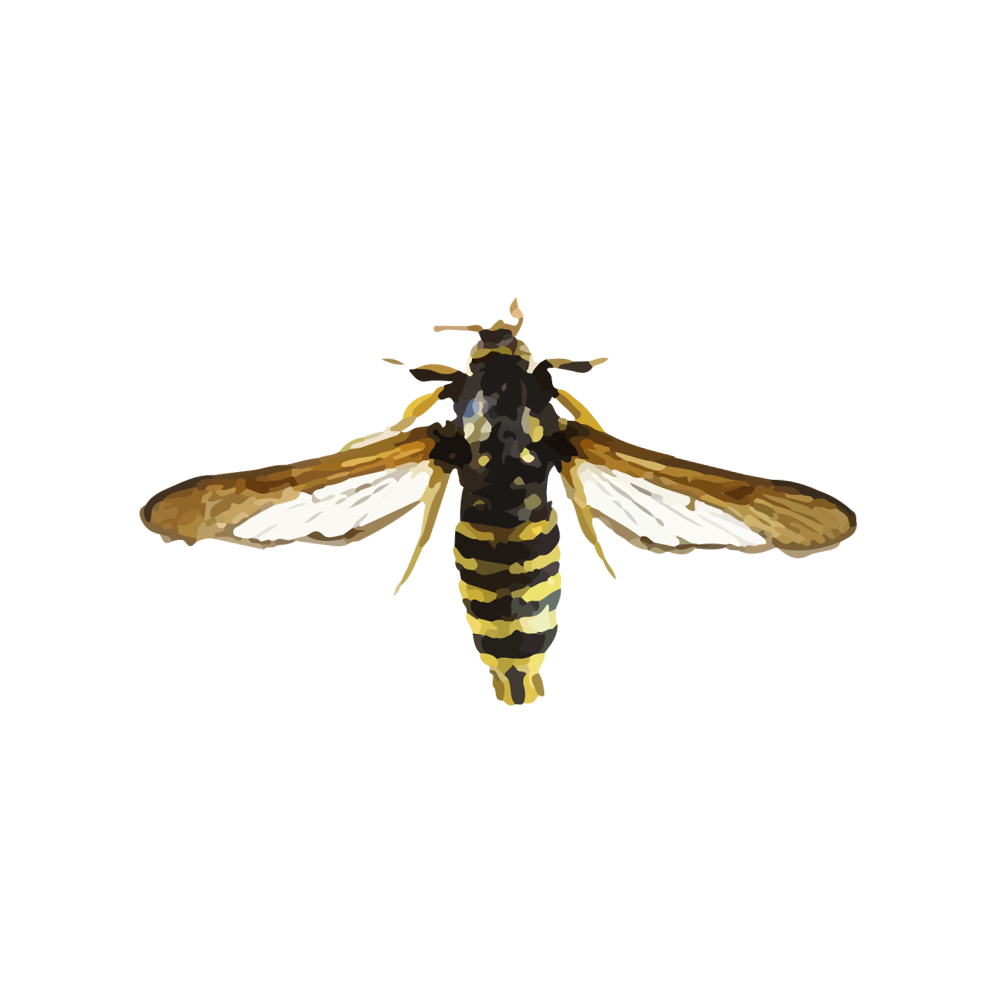


| Latin Name | Paranthrene tabaniformis |
| Common Name | Dusky clearwing |
| Biology | Adults are diurnal, resembling bees in appearance with rapid flight, and lay eggs in wounds or bark cracks of nursery stock. Larvae bore into the stems of poplar, willow, and other nursery plants, forming galls that obstruct nutrient transport, weaken plant growth, and make seedlings prone to wind breakage. This pest completes one generation annually, overwintering as larvae within galls. |
| Damage | This pest primarily damages nursery plants and young trees of Salicaceae species (e.g., poplars and willows). |
| Distribution Regions | Eurasia |
| Monitoring | Pheromone lures mimic natural sex pheromones to attract male insects into specialized traps for population monitoring and suppression. As a core IPM component, monitoring enables early risk detection and targeted control. Mass trapping reduces mating opportunities to curb offspring populations. Protocols: ●Use only with matched traps. ●15-45 traps/hectare,replace/replenish every 4-6 weeks. ●Wear gloves or wash hands with detergent when switching lure types. ●Refer to trap-specific hanging instructions. |
| Recommended Traps | Delta Trap, Wing Trap |

Comparta su información de contacto para recibir soluciones de feromonas de precisión. En caso de que nuestra cartera existente no se adapte de forma óptima, nuestro equipo de química sintética iniciará el desarrollo personalizado, desde el diseño de la estructura molecular hasta la producción a escala.